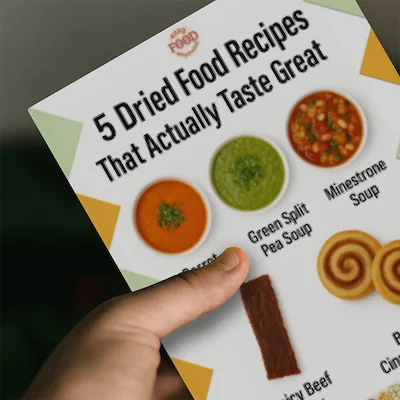Old Pages - New Content
You've arrived at THIS page due to you landing on an OLD LINK.
- For my old existing FAQ pages 1 through 15, consider visiting this FAQ page
- For the old Amazon Marketplace link - just go to Amazon.com :-)
- For the old videos page, they're completely gone for now while I revamp.
- For pizza-related pages: "Bread-and-Pizza," "Pizza-Take-Two," and "bread-and-pizza," along with plain old "Pizza" take note that all those forward to this link: "https://www.easy-food-dehydrating.com/pizza.html"
- For my Supmakin video demo on its video page, it wouldn't "play nice," so I deleted that page and that's why you're here. Sorry about that! But you can go see my review of the Once-For-All Supmakin slicer here
Podcast Links
These old Podcast pages have been removed
Podcast Hub Page: Easy Food Dehydrating Podcast
Season 1
- Podcast Easy Food Dehydrating
- Podcast 10 Things You Should Know About Dehydrating Food
- Podcast 6 Steps For Dehydrating Food Safely
- Podcast Create Food Storage Space
- Podcast Dehydrating Fruit Vegetables And Meat
- Podcast Dehydrating Meat
- Podcast Difference Between Nesco And Excalibur Dehydrators
- Podcast Food Vacuum Sealer Bags And Rolls
- Podcast How To Dehydrate Food Safely Overview
- Podcast Make Your Own Dog Food
- Podcast Mylar Bags
- Podcast Oxygen Absorbers
Season 2
- How to Dehydrate Pumpkin
- Rehydrate Dried Food Safely
- Pork Dehydrating Basics
- Dehydrating Green Beans
- Kitty Cravings Cat Treats
- Oxygen Absorber Sizes
- How to Dehydrate Fruit Overview
- Dehydrate Eggs Safely
- Dehydrating Food in Convection Ovens
- Easy Food Dehydrating and Safe Food Storage
- Making Dried Food Gifts
- Use the Right Size Oxygen Absorber
Reader Submissions
- Boston Butt Pork Stew
- Daisy Food
- Doggie Biscuits
- Foodsaver V3485
- Foodsaver V2840
- Pork Tips
- Lettuce, Pea, and Green Bean Spongies
- Excalibur Dehydrator 3900
- I've Had This Dehydrator For Close To TWO Decades
- 4-Tray Excalibur
Forum Questions
- How Can I Stop My Bananas From Going Brown?
- Dried Tomatoes
- Do You Have To Peel Carrots Before Drying Them?
- Frozen Fish
Old Reader Submission Comment Forms
Pages formerly known as these shown below are not accessible any more.
- can i use yellow split peas comment form
- /fd60 comment form
- which dehydrator lasts comment form
- 4-tray model comment form
- fd35 comment form
- fd75a comment form
- ancient but still works comment form
- beef stew best cut to use comment form
- nesco fd 75a comment form
- nesco fd61p 500 watt dehydrator comment form
- nesco professional comment form
- nesco with seven trays comment form
- beef stew1 comment form
- green split pea soup in slow cooker comment form
- carrot soup1 comment form
- do you have to peel carrots before drying them comment form
- how do you vacuum air out of a mason jar comment form
- ive had this dehydrator for close to two decades comment form
- carrot cake comment form
- carrot cake recipe comment form
- debs carrot cake comment form
- dried tomatoes comment form
- 4tray excalibur comment form
- daisy food comment form
- foodsaver v3485 comment form
- how can i stop my bananas from going brown comment form
- whats the difference between freeze drying and dehydrating comment form
- excalibur dehydrator 3900 comment form
- food saver v2840 comment form
- frozen fish comment form
- lettuce pea and green bean spongies comment form
- pork tips comment form
- doggie biscuits comment form
- boston butt pork stew comment form
- 4tray excalibur
- whats the difference between freeze drying and dehydrating
- foodsaver reader reviews
- excalibur dehydrator reader reviews
Previously-Existing Links
For these pages with old existing links:
- Face Masks
- 30 Things I Love About My Mom
- Christmas Time Once More
- Christmas Losses
- Help! My Dog Will Not Eat...
- Jolly Old England
- Survival seeds
- The Raw Food Revolution
- Got taxes
- Food glorious food
- Betty's vegetables
- Get serious
- Solar made easy
- Cooking in a crisis
and
- Forget the flowers...
all those pages were completely removed and that's why you landed here. Sorry about that!
Extra Content from Old Forms
On some pages, I have a form where you can send in your comments pertaining to what you've read on that page.
Sometimes, for some strange reason, they show as links that are inaccessible. I will try to figure out why, but at the moment, it's above my pay grade.
Questions? Contact Me.
Grab 5 Dried Food Recipes You'll Actually Love
Don't forget to grab a copy of our all new
5 Dried Food Recipes (That Actually Taste Great)
They're my all-time favorite easy dried food meals!
Get it here right now.
For Free!









